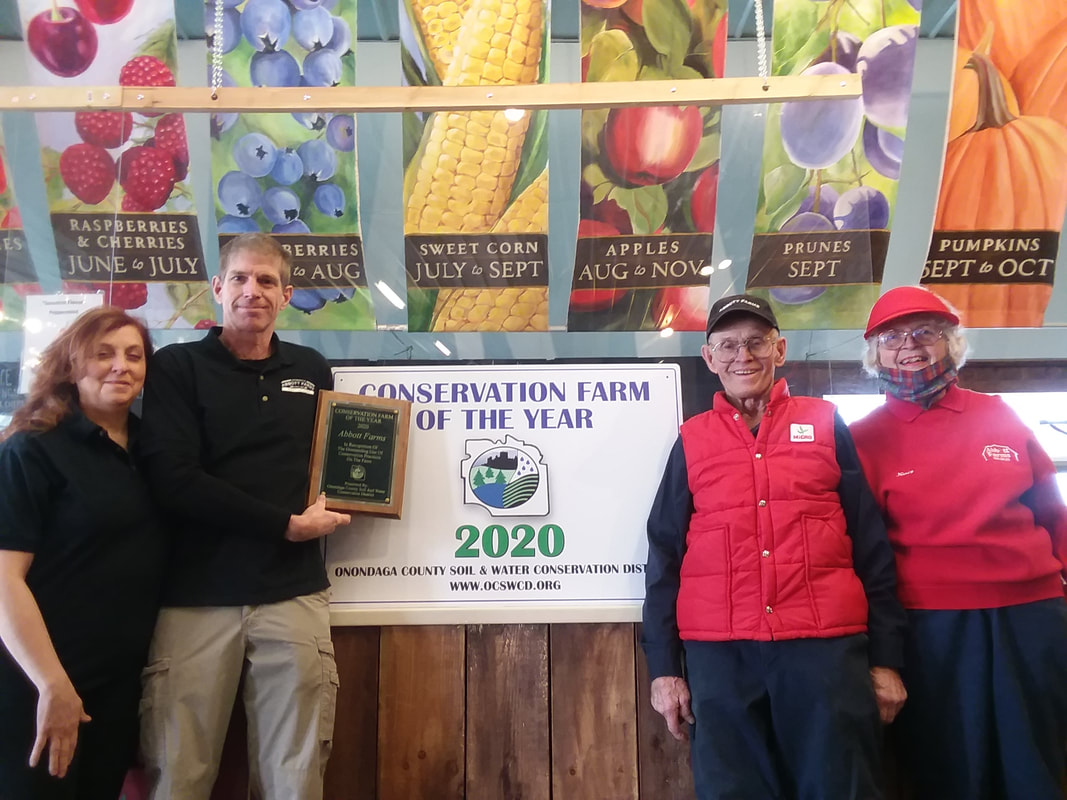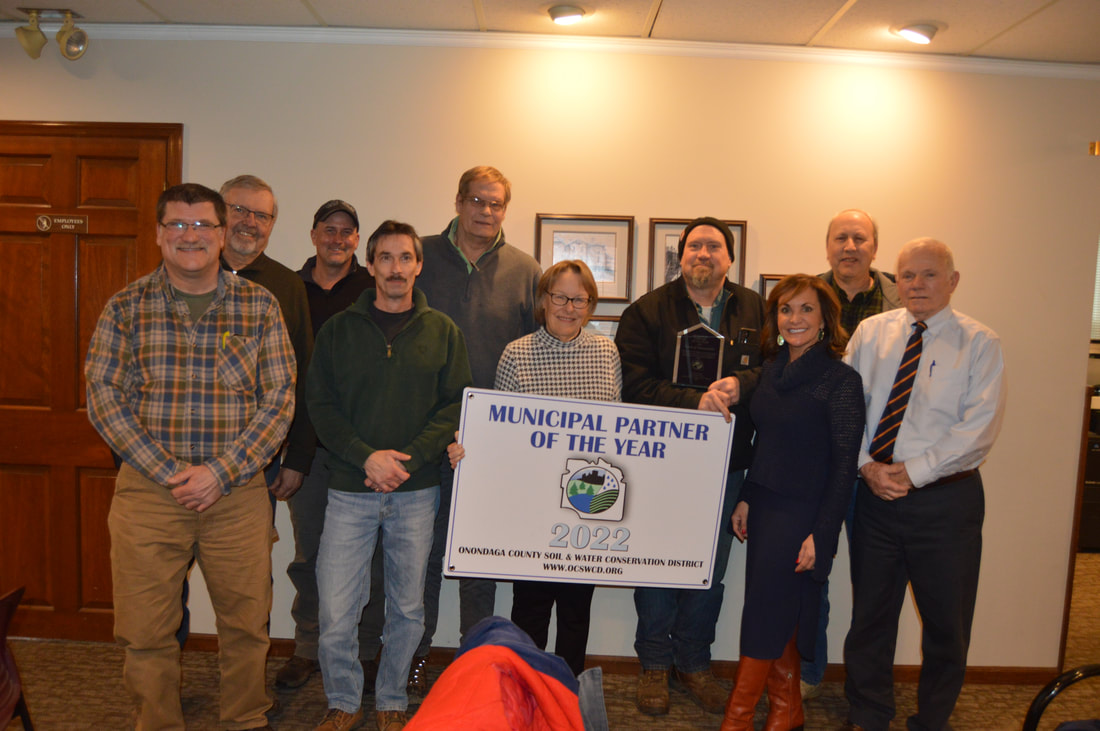HISTORY
WHY DO DAIRY FARMS BUILD
SATELLITE MANURE STORAGE
STRUCTURES?
SATELLITE MANURE STORAGE
STRUCTURES?
|
OUTSTANDING COOPERATOR OF THE YEAR AWARD
The first award was presented in 1976 to John L. Tucker & Sons, Skaneateles, NY. 2023: Brady Farm
2022: Mary Knapp 2021: Burton Farms 2020: Abbott Farm 2019: VanErden Farms 2018: Dennis Family Farm 2017: Pompey Hollow Angus, LLC 2016: Emmi and Sons, Inc. 2015: Lawrence Doody & Sons, LLC 2014: Barbland Dairy, LLC 2013: Tre-G Farms, LLC 2012: Burgett Farm 2011: Reeves Farms 2010: Greenfield Farms, LLC MUNICIPAL PARTNER AWARD2022: Town of Skaneateles
2021: Town of Spafford 2020: Town of Elbridge 2019: Town of Lysander 2018: Town of Van Buren 2017: Town of Lysander 2016: Town of Camillus Highway Dept. 2015: Onondaga County DOT |
Manure storage is an important environmental protection practice and more dairy farms across NYS are installing or adding to their storage capacity. Manure storage allows for improved application timing so that nutrients can be better recycled for crop use. Farms that are regulated or that receive state or federal cost sharing must design and build manure storage in accordance with strict USDA-NRCS standards. New regulatory requirements are bringing additional limitations that affect when manure may be applied making adequate manure storage capacity a necessity, and this will also drive an increase in construction of manure storages. Many farms have built manure storage structures near the barns where the animals are housed for ease in loading. Manure needs to be applied at an agronomic rate to crop land, according to crop need, and this means manure must be transported to most fields operated by the dairy, some near, some far. Further, traditional bedding sources like straw or sawdust have become very expensive or difficult to find, so many farms provide mattresses or have turned to bedding with sand or recycled manure solids for cows in freestall housing. This results in manure with a liquid consistency, and often containing 90-95% water. This watery material is bulky and presents challenges to move around at the optimum spreading time to land that grows crops for the cows. For these reasons, it often does not make sense to enlarge or add a second manure storage structure at the home location, but to create storage near other blocks of land where manure will be land applied anyway. These structures are referred to as satellite storage.
A satellite storage allows farms to pump or transport manure during less busy times and in ways that reduce traffic intensity and odor prevalence. This is a benefit for the environment, neighbors, and the farm. This system also allows farms to focus on manure application when the land is ready, as the time-consuming aspect of hauling was taken care of before the growing season starts. This means more timely manure application and also better results for the farm and the environment, because risks of nutrient loss are lower when timing is better. Karl Czymmek and Peter Wright PRO-DAIRY Program Cornell University |
Chartered in 1944, the Onondaga County Soil & Water Conservation District is one of 58 special purpose Districts in New York State, one in each county, including the five boroughs of New York City. Each District is governed by a Board of Directors who set program policy to be implemented by the District staff.
In Onondaga County, the District staff consists of an Executive Director, Program Team Leaders, Water Quality Specialists, support staff and various volunteers and interns. Your District is funded largely through state grants and county appropriations.
Reducing erosion and nutrient runoff from agricultural and non-agricultural nonpoint sources by the use of Best Management Practices.
|

